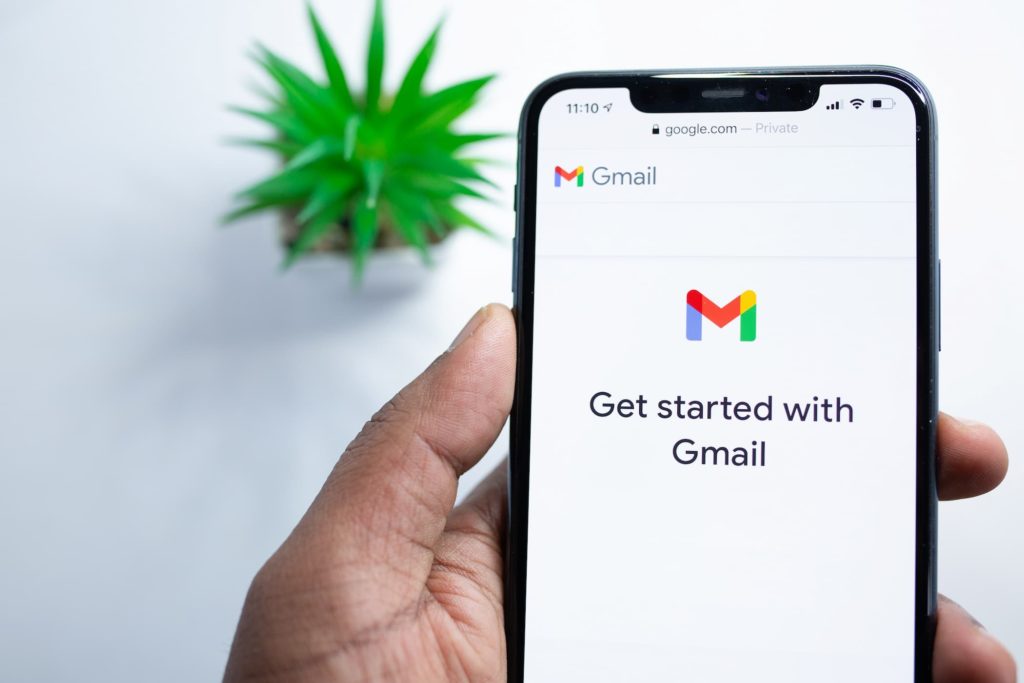A copywriter’s guide to email marketing
When it comes to online platforms that connect you with your audience, social media is like the popular kid everyone won’t stop talking about. And it’s not hard to see why. They’re fun, they’re engaging, and they allow you to partake in the latest meme trend.
But when it comes to actually driving conversions and making sales, email marketing is still king. Sure, email might not be as flashy or exciting as social media. But the results are hard to beat.
Studies have shown that a well-crafted email marketing campaign can earn you an average clickthrough rate of 3.57%. In contrast, the clickthrough average you can expect from Facebook is a mere 0.07%. The average clickthrough rate for Twitter is even worse at 0.03%.
However, generating email marketing success is not as simple as sending out a blast and waiting for the orders to come in. If you want to make the most of email marketing, you need to understand how to write effective marketing copy that gets your emails opened, read and acted upon.
That’s why we’ve put together this guide to email marketing, tried and tested by professional copywriters. We’ll walk you through everything from crafting catchy email subject lines to creating great email copywriting. So whether you’re just getting started or you’re looking to take your emailing skills to the next level, this guide is for you.
[toc]
What is email marketing?
Email marketing is a form of direct digital marketing that uses electronic mail as a means of communication. One of the ways an email campaign differs from other forms of digital marketing is that it allows businesses to target specific audiences with customised messages.
An email marketing campaign can be used to build relationships with customers, promote new products or services, or simply keep customers updated on news and events. It can also be an effective way to increase website traffic and generate leads.
Is an email newsletter a type of email marketing?

Yes, an email newsletter is a type of email marketing. Email marketing is a way to reach out to customers and prospects with targeted, personalised messages. An email newsletter is one type of email marketing message you can use to achieve your desired results.
Email newsletters are typically sent on a regular basis (weekly, monthly, etc.) and contain a variety of content types, such as articles, interviews, tips, product recommendations, and more. Newsletters keep your business top-of-mind with your audience. It also allows you to nurture relationships based on trust and mutual interest.
How can email marketing help my business?
Email marketing allows you to speak directly to your customers and prospects and deliver a personalised message. You alone get to control the timing of your campaign. What’s more, you’re not at the mercy of algorithm changes or other factors beyond your control.
Plus, having a subscriber list means you’re in control of your own platform. Unlike social media, where platforms can (and do) change their rules regularly, your email list is yours to do as you please.
Here are just a few ways that email marketing can help your business:
Drive sales
Email marketing can be used to promote special offers and discounts. It can also be used to encourage prospects further down the sales funnel to make a purchase.
Foster loyalty
Human beings have a deep-seated need for consistency. So by getting your target clients to commit to something relatively small – like opting into your email list – you’re paving the way for potentially much bigger sales down the road.
Grow brand awareness

Email marketing can help you reach a wider audience and grow your brand awareness by sharing your content with people who may not be familiar with your business. This is a great way to get your name out there and make prospects aware of what you have to offer.
Keep your customers informed
Email marketing can keep your customers informed about new developments in your business. This is a great way to keep them up-to-date on the latest company news, trends and promotions.
How do I write a great marketing email?
It’s a question that plagues marketers everywhere. Is there a surefire way to get your marketing email opened, read, and responded to? How do you keep readers from clicking “unsubscribe” or worse, moving your email to the dreaded “spam” folder?
Like all other forms of marketing, the goal of your marketing email is to reach your target audience and convert them into leads. To do that, you need marketing copy that’s not only well-written, but also effective at getting your readers to take action.
Here are some tips for writing great email copywriting:

Know your audience
The first rule of marketing is your product or service has to solve a problem for your target customer. In order for it to do that, you have to know who your target market is. What are their needs and wants? What are their pain points? And how can you be the cream for the rash your target market is dealing with? Understanding that will help you create marketing copy that resonates with them and help you achieve your marketing goals.
Have good email subject lines
Your email subject lines often the make-or-break factor when it comes to whether or not your email gets opened. So, make sure your email subject line grabs your reader’s attention and is relevant to the rest of your email copy.
Pay attention to your preview text
The preview text is the short text that appears after the subject line that gives readers a quick peek of what’s inside the email. While your readers only get to see part of the first sentence, a preview text is still a crucial part of your email.
Since your preview text shows up next to the email subject lines in most inboxes, it’s important not to think of both these elements as separate from each other. Instead, craft them together to give recipients a complete picture of what’s waiting for them inside.
Use “you”
Email marketing is a way to connect with your audience on a one-to-one basis. Your readers want to feel like you’re speaking directly to them. The best way to do that is by using second-person pronouns like “you” and “your” in your email marketing copy.
For example, “You’re going to love our new arrivals” sounds a lot more personal than “Our new arrivals are amazing.” Writing in second-person pronouns doesn’t just make your email copywriting feel more personal. It also makes it clear that the message is meant for them specifically – not just anyone who happens to read it.
Personalise your email copywriting

Emailing gives you a direct line into someone’s inbox. That makes it personal. People want to do business with people, not faceless corporations. So make sure your email copywriting sounds like it’s coming from a real person to another.
Adding a personal touch – even something as simple as using the recipient’s first name in your email copywriting – can make a big difference. If you have any other data points about them (like their location, purchase history, or recent activity on your site), you can use that too to further personalise your message.
Have a call to action
Remember that the whole point of email marketing is to get people to take action, whether that’s clicking through to your website, signing up for a free trial, or making a purchase. So, make sure your email has a call to action that’s easy to act upon and impossible to miss.
How to write a good subject line for email marketing
Your email subject line is your first (and sometimes only) chance to make a good impression on your subscribers. So it’s important to take the time to craft well-written, effective email subject lines that will entice people to open your email.
Keep your email subject line short
When it comes to email subject lines, you’ll often find that less is more. Studies have found the highest response rate comes from email subject lines with only three to four words. Keeping your email subject line copy short will also ensure it can be read in full when displayed in an email inbox.
Trigger urgency
We all know the feeling of FOMO. That sense that we need to act now or we’ll miss out. Creating that sense of urgency, when it’s appropriate, in your email subject line can prompt your readers to open and read your email right away. Just be careful not to overuse this tactic or your subscribers will start to tune it out.
Avoid clickbait
There’s nothing more disappointing than clicking on an email only to find that the content doesn’t live up to the hype that the email subject line created. Implying your email contains something it doesn’t is not only misleading, but it will also damage your relationship with your subscribers. Be honest in your email subject line, don’t make false promises and deliver on the expectations you’ve set.

Use keywords
When a prospect opens their inbox, your email subject line is the first thing they’ll see. Including keywords in your email subject line can help your email stand out amongst the sea of other messages vying for their attention. Different audiences react to different keywords. So it’s important to test out a few options to see what works best for your mailing list.
Test your email subject lines
The only way to know for sure what works with your audience is to test different email subject lines and see how they perform. Try out different lengths, tones, and types of email subject lines and see which ones get the most opens and clicks. Then, you can start to fine-tune your email subject line strategy for even better results.
Being human in your email marketing
There’s nothing marketers fear more than being known for their “salesy” emails. You know the kind – Messages that read like a used car salesman wrote them, and are about as subtle as a sledgehammer.
While the goal of email marketing is ultimately to promote a product or service (In fact, your customers might get suspicious if you don’t), no one wants to be bombarded by a hard sell.
The key to successful email marketing, then, is to find the balance between selling and being human. Your customers should feel like they’re getting value from your emails, whether that’s in the form of valuable information or entertaining content. At the same time, you need to make sure you’re promoting your product or service in a way that doesn’t come across as trying too hard.
Incorporate a bit of you in your emails
Everyone likes a good story.
Every day of your life, you make observations, meet people, and experience situations that would make for a great dinner party conversation. But for some reason, when we sit down to write an email marketing message, we suddenly forget all of that.
Infusing your emails with some of your own experiences will help you connect with your readers on a personal level, and make your message more relatable. Not to mention, personal stories are just plain enjoyable to read. They make the recipient feel like they’re getting to know the real you, rather than simply being marketed to.
Being human doesn’t mean being unprofessional
Of course, being genuine in your email copy doesn’t mean being unprofessional. Your email subscribers may appreciate a joke or personal anecdote every now and then. But that doesn’t mean they would necessarily feel comfortable with you talking about the latest scandal at work. And neither would you feel comfortable with your readers knowing every intimate detail of your life.
You can be friendly without being overly familiar. And you can be relatable without sacrificing your credibility. To be human means crafting a genuine but polished version of yourself.
Write emails that get opened, clicked and shared
Email marketing campaigns are a great way to build long-lasting and mutually beneficial relationships with your customers. But to do that, you need to create content that speaks to your readers on a personal level. That doesn’t mean you can’t promote your products or services in your emails – We encourage it in fact – but it does mean your emails will need to be more than just a sales pitch.
In this article, we’ve provided some tips for writing effective email marketing content. By following these simple guidelines, you can create email marketing campaigns that will get attention, generate leads, and boost your sales.
Learn from the experts – The secrets to mastering your email marketing
If you’re looking to build a successful email newsletter, Taleist offers two courses that cover everything from writing the perfect email subject lines to finding inspiration for your newsletter content. And our results speak for themselves – Taleist newsletters boast an average open rate of 42.56% and an average click rate of 5.02%.
